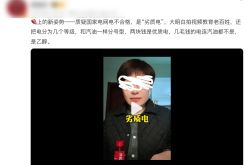“Poor-Quality Electricity” Causes Electric Cars to Self-Ignite? Scientifically Debunking Three Major Electric Car Myths, Beware of Being Fooled
![]() 11/11 2025
11/11 2025
![]() 472
472
Scientifically Debunking Electric Car Myths.
Popularizing knowledge about new energy vehicles still has a long way to go.
If you come across a video claiming that "charging with cheap electricity can cause electric cars to self-ignite," would you feel a pang of anxiety? Previously, a video on a short-video platform alleging that "a certain brand of new energy vehicle self-ignited due to charging with 'poor-quality electricity'" sparked widespread discussion. However, it was later revealed to be a baseless fabrication by netizen Chen. According to the Beijing Daily, Chen has been legally apprehended.
Chen's 'poor-quality electricity theory' is crudely simplistic—it classifies electricity as 'good' or 'bad' based on price. Electricity costing over two yuan per unit is deemed 'high-quality,' analogous to 98-octane gasoline, while electricity around 1.8 yuan corresponds to 91-octane gasoline. Electricity priced at 40-50 cents per unit is labeled 'poor-quality,' likened to ethanol-blended gasoline.
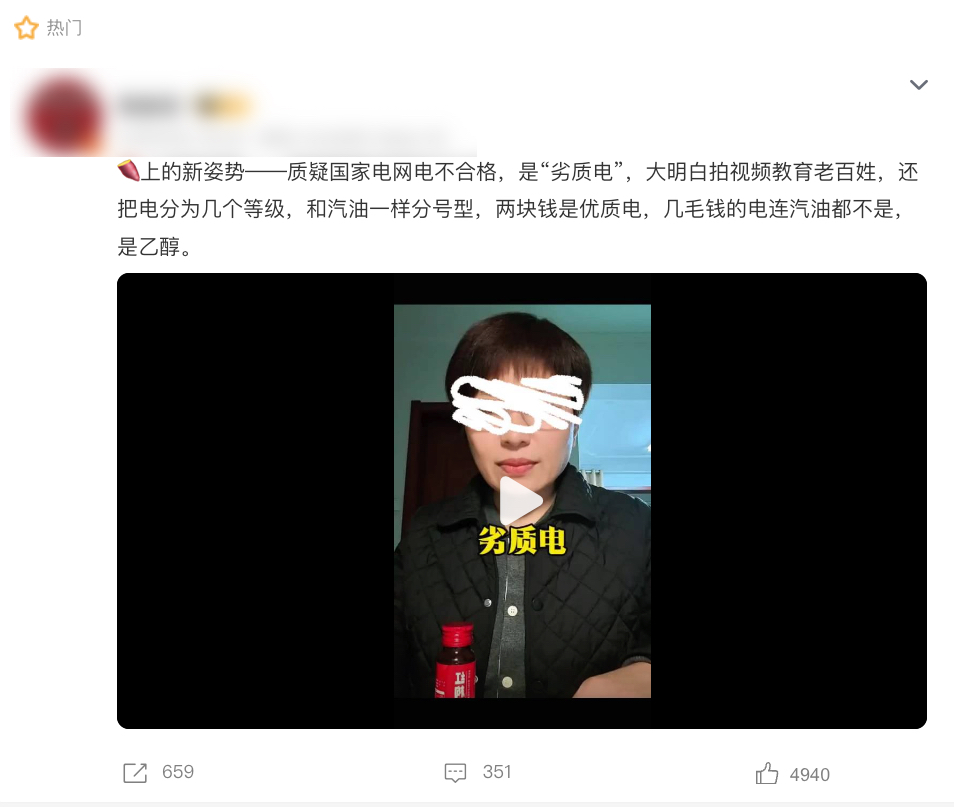
Screenshot: Weibo
This notion may seem to align with the common-sense principle of 'you get what you pay for,' but it fails to withstand any scientific scrutiny. The original video offered little explanation yet precisely tapped into some people's safety concerns about new energy vehicles, rapidly triggering widespread shares.
Similarly, a photo of a so-called 'electricity filter' circulated on social media, with the blogger even claiming it functions similarly to a gasoline filter, implying it can mitigate 'poor-quality electricity risks.'
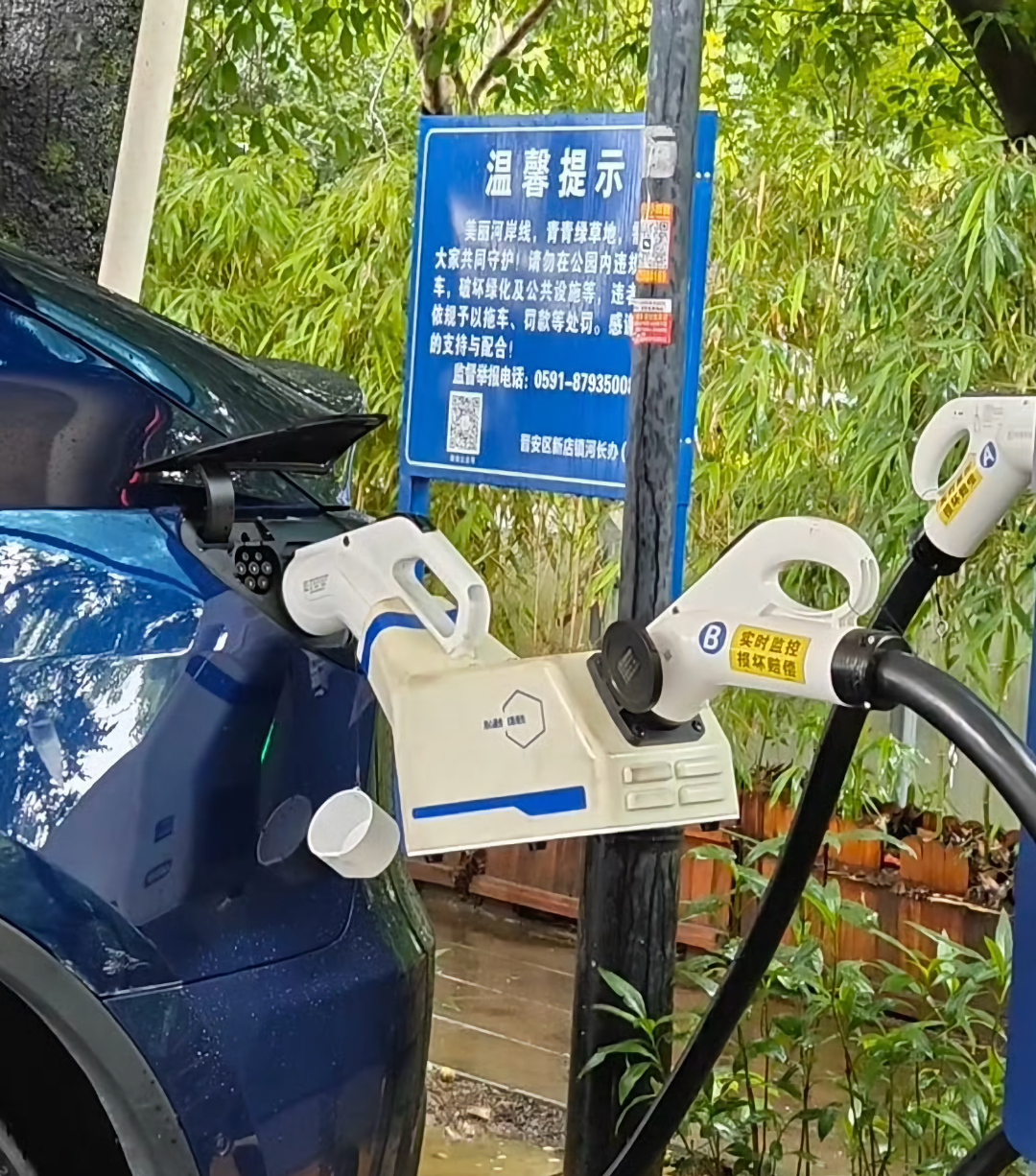
Source: Weibo
The reason these rumors spread so easily is that they exploit public cognitive gaps. Whether it's Chen's absurd 'poor-quality electricity theory' or the so-called 'electricity filter,' both essentially stem from misunderstandings of new energy technologies. Let's step out of the 'you get what you pay for' mindset and scientifically dissect the so-called 'poor-quality electricity' from the essence of electricity.
Doubled Charging Prices, But the Issue Doesn't Lie in the Electricity Itself
Electricity is a physical phenomenon resulting from the directional movement of electric charges. Its core value lies in providing energy that meets specific parameter standards, with no inherent quality differences—compliance is key.
China has clear national standards for civilian and industrial electricity use. Whether supplied by the grid or output by charging stations, key parameters like voltage, frequency, and waveform must comply with relevant norms, such as GB/T 18487.1-2023. This means that electricity from compliant sources is essentially 'homogeneous' in energy delivery. High-priced electricity doesn't come with extra perks, nor does low-priced electricity pose safety risks.
The core deception of the 'poor-quality electricity' rumor lies in forcibly linking 'electricity's physical properties' with 'charging process stability,' equating price with quality, and attributing occasional battery safety issues to 'electricity quality.'
In reality, the true risks don't stem from 'electricity itself' but from 'electricity transmission and conversion.' Issues like voltage fluctuations, frequency deviations, and harmonic interference are the key factors that may trigger safety hazards.

Source: Pixabay
China's national standards stipulate that the voltage deviation for civilian power supply shall not exceed ±5%, with a grid standard frequency of 50Hz and an allowable deviation of ±0.2Hz. New energy vehicle charging systems are designed according to these standards. If a charging station malfunctions, its output voltage and frequency deviations may exceed standard ranges, affecting charging and discharging control accuracy over time and potentially causing battery short circuits. Additionally, if components like rectifier bridges and filters inside the charging station have quality defects, harmonics may be generated during charging, disrupting the system's normal operation and indirectly affecting battery lifespan and safety in the long run.
Electricity is inherently clean energy; the trouble often arises from substandard 'transmission pipelines.'
Thus, charging safety hazards stem from power quality issues caused by technical defects in charging equipment, which is entirely different from the logic of 'low-priced electricity equals poor-quality electricity.'
But why do charging station prices vary? Dianchetong believes there are two main reasons.
First, pricing differences are jointly determined by the marketing strategies of charging station enterprises and the attributes of their locations. Leading charging station brands typically charge slightly higher fees due to their more comprehensive service systems and better facility maintenance. 'Essential scenarios' like highway service areas and scenic spots, where users have urgent charging needs, also see operators moderately raising service fees. Conversely, emerging brands often offer discounts, full-reduction promotions, and other incentives to quickly capture market share and attract car owners with more cost-effective pricing.
Second, peak-valley electricity pricing policies are a key factor influencing charging costs. Most regions in China have implemented peak-valley time-of-use electricity pricing, with higher costs during peak hours and lower costs during off-peak hours. For example, in Guangzhou, where Dianchetong is based, the electricity price at the same charging station can reach 1.5 yuan per kWh during peak hours but drop to as low as 0.7 yuan per kWh during off-peak hours—a more than doubling of the price difference.

Screenshot: Xiaoju Charging
This prompts many cost-sensitive new energy vehicle owners, such as ride-hailing drivers, to deliberately choose late-night off-peak hours for charging to minimize driving costs.
Dispelling Electric Car Anxiety: Clarifying Three Major Myths
The 'poor-quality electricity' myth can be easily debunked with simple analysis, but Dianchetong has noticed that cognitive misconceptions in the new energy vehicle field extend beyond this.
Delving deeper, the reasons are not hard to understand: the new energy vehicle market is in a period of rapid development, with technological iteration far outpacing updates in user cognition. Most users' understanding of cars is still rooted in the gasoline vehicle era or the early stages of new energy technology, leading them to apply gasoline vehicle logic and common sense directly to new energy vehicles. This creates fertile ground for the spread of various scientifically unfounded rumors.
Myth 1: Battery Radiation Causes Cancer.
'Electric cars emit high levels of radiation. Long-term driving can cause hair loss, leg hair loss, and even cancer.'
Such claims have circulated online for a long time, causing many consumers to worry. However, authoritative conclusions have already been made: the China Internet Joint Rumor-Refuting Platform's '2023 New Energy Vehicle Industry Rumor-Refuting List' officially clarified that the notion of 'high radiation and cancer risks from new energy vehicles' is unfounded.
China has strict safety standards for vehicle electromagnetic radiation, with a magnetic field radiation safety limit of 100μT. All new energy vehicles must pass EMC (Electromagnetic Compatibility) testing to ensure radiation levels meet standards before mass production and delivery. The magnetic field radiation in the front row of new energy vehicles typically ranges from 0.8–1.0μT, while the rear row ranges from 0.3–0.5μT—far lower than the electromagnetic radiation levels of mobile phones, microwaves, and computers.
Tesla Vice President Tao Lin also formally addressed concerns about ionizing radiation on social media, stating that the magnetic field strength near the driver's and passenger's heads in a Model 3 is only 0.08–1.30μT, well below the national safety limit, further confirming the radiation safety of new energy vehicles.
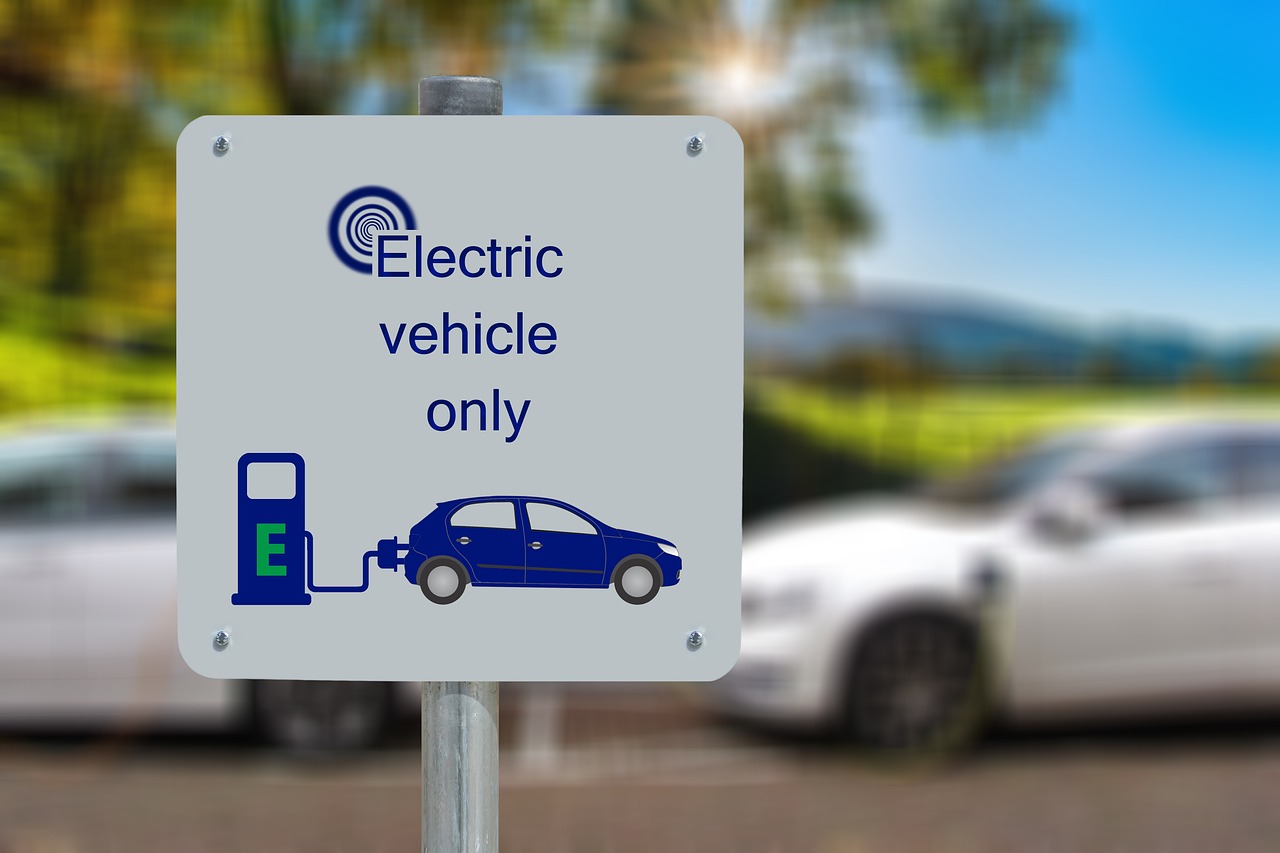
Source: Pixabay
Myth 2: Electric Car Batteries Degrade Significantly After Five Years.
Batteries do have two main lifespan issues: cycle life and calendar life. Cycle life refers to the gradual reduction in a battery's maximum capacity as charging cycles increase, while calendar life refers to the gradual reduction in maximum capacity due to material aging, even when the battery is not in use.
During the early development of new energy vehicles, many pure electric vehicles had ranges between 200–300km. After five years of use, their ranges often halved, leaving a lasting impression of 'rapid battery degradation.' However, this pain point has now been significantly alleviated. New energy vehicle manufacturers generally offer warranties limiting mileage to 30,000km per year, which averages to less than 100km per day. A pure electric vehicle with a 500km range would require approximately 60–80 charging cycles per year—far fewer than those of digital products—meaning battery degradation is now better managed.
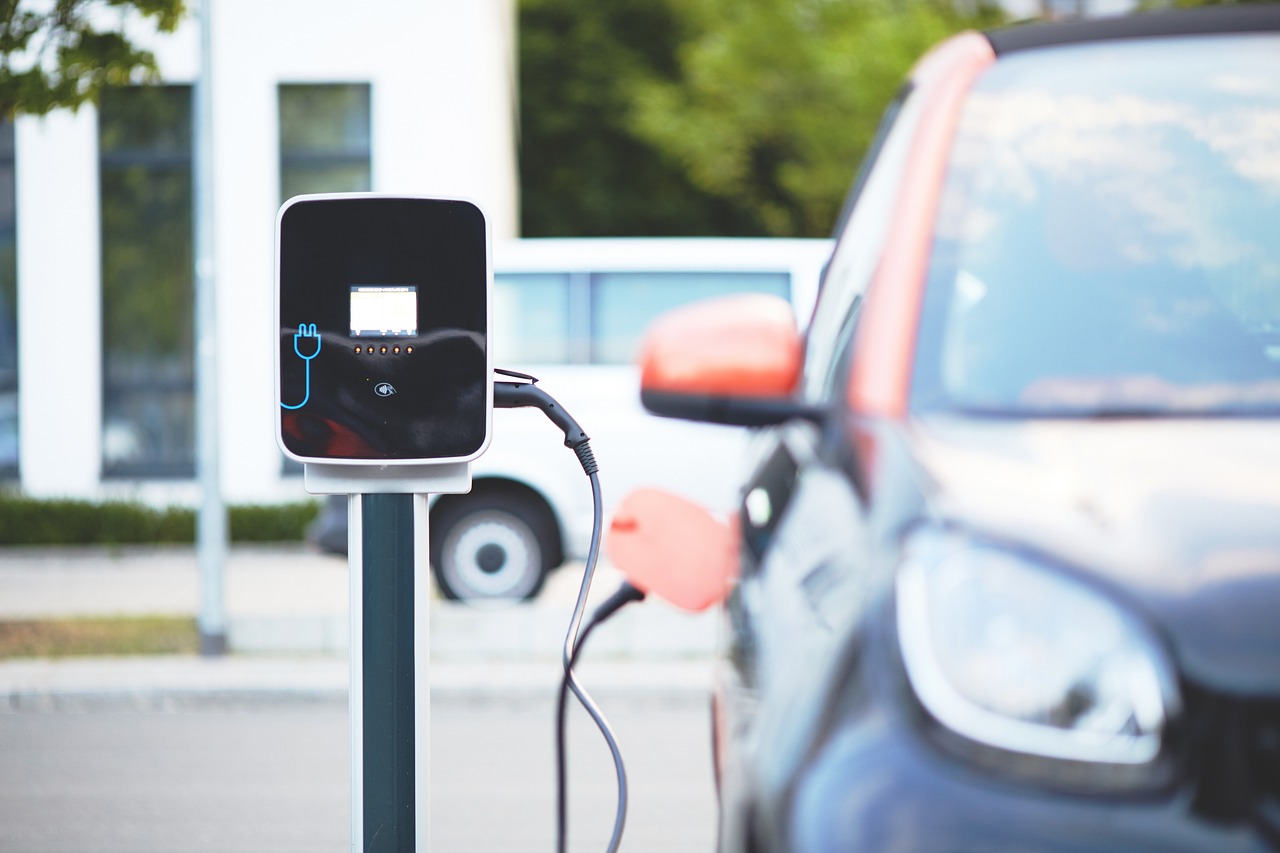
Source: Pixabay
At the '2025 South China Lithium Battery Recycling Regional Cooperation Conference,' the '2025 China New Energy Vehicle Power Battery Retirement Prediction Report' was officially released, forecasting the service life of new energy vehicle power batteries in China. It predicts that pure electric new energy vehicles have a service life of approximately 6–10 years, while plug-in hybrid new energy vehicles have a service life of approximately 12–16 years.
Among these, pure electric vehicles used as taxis or rental cars have a service life of around 7 years, while private pure electric vehicles can last up to 11.2 years—basically covering the lifespan of a typical vehicle.
Moreover, some models from leading brands like BYD, Chery, Geely, and GAC Toyota now offer lifetime warranties for their three-electric systems (battery, motor, and electric control). If battery degradation is severe during the warranty period, manufacturers will replace the battery free of charge. In other words, battery degradation is no longer a major concern for consumers.

Source: Pixabay
Myth 3: The Self-Ignition Rate of New Energy Vehicles Is Several Times Higher Than That of Gasoline Vehicles.
The claim that 'new energy vehicles have a much higher self-ignition risk than gasoline vehicles' once sparked widespread safety concerns, but data tells a different story. According to statistics from the National Fire and Rescue Bureau, the probability of new energy vehicles catching fire last year was 0.00175%, significantly lower than the 0.0052% for gasoline vehicles—meaning gasoline vehicles are nearly three times more likely to catch fire than new energy vehicles.
The illusion that 'new energy vehicles are more prone to self-ignition' stems from the fact that they are still relatively new to consumers and thus attract more attention. Any safety incidents are more likely to be rapidly disseminated and amplified through social media, intensifying public anxiety.
More notably, safety standards for new energy vehicles continue to upgrade. In March of this year, the 'Safety Requirements for Traction Batteries Used in Electric Vehicles' (GB38031-2025) was officially released and will take effect on July 1, 2026. The new national standard explicitly mandates that traction batteries must not catch fire or explode, further tightening safety thresholds and ensuring better control over fire risks in future new energy vehicles.
Conclusion
The market penetration rate of new energy vehicles surpassing 50% is a recent development. Amid rapid industrial expansion and technological iteration, information asymmetry and vested interests have allowed rumors to thrive, becoming stumbling blocks to industry development.
Clearly, the harm caused by these rumors is far from trivial. For consumers, the excessive anxiety fueled by misinformation leads many to miss out on more economical and environmentally friendly transportation options, incurring unnecessary decision-making costs. For the industry, the 'ease of spreading rumors versus the difficulty of debunking them' results in manufacturers' R&D resources being diverted to countering black PR, disrupting brand innovation rhythms.
From Dianchetong's perspective, dispelling rumors in the new energy vehicle market is not the responsibility of a single entity but requires collective efforts.
Automakers need to transparently disclose product information and alleviate user concerns through real-world experiences. Professional automotive platforms should strengthen content oversight and crack down on malicious rumor-mongering and black PR supply chains. Authoritative institutions must enhance science communication efforts, using empirical data and national standards to dispel cognitive misconceptions.
Only by letting science prevail over rumors and facts replace misinformation can consumers confidently purchase vehicles and the industry continue to progress through healthy competition.
(Cover image source: Pixabay)
New energy, pure electric, charging, debunking rumors, battery
Source: Leitech
Images in this article are from the 123RF licensed image library. Source: Leitech


